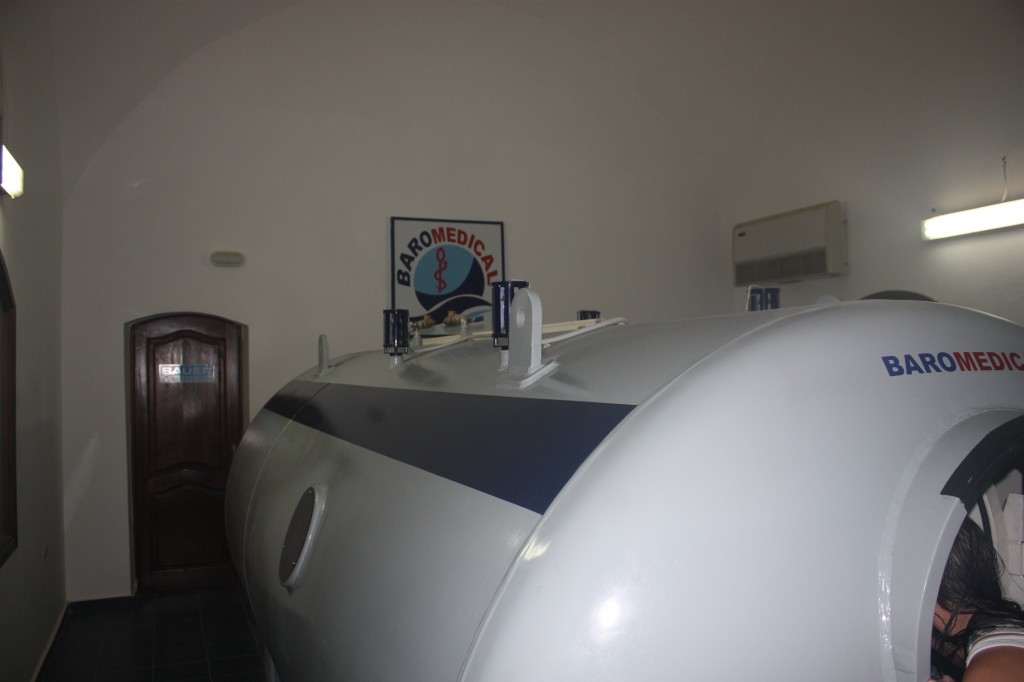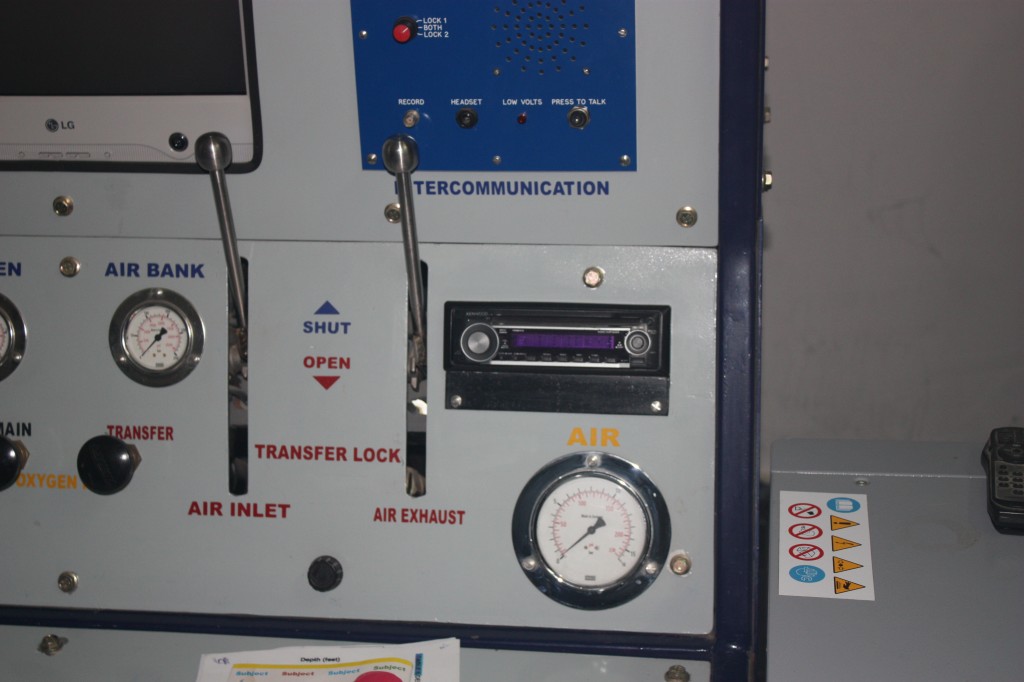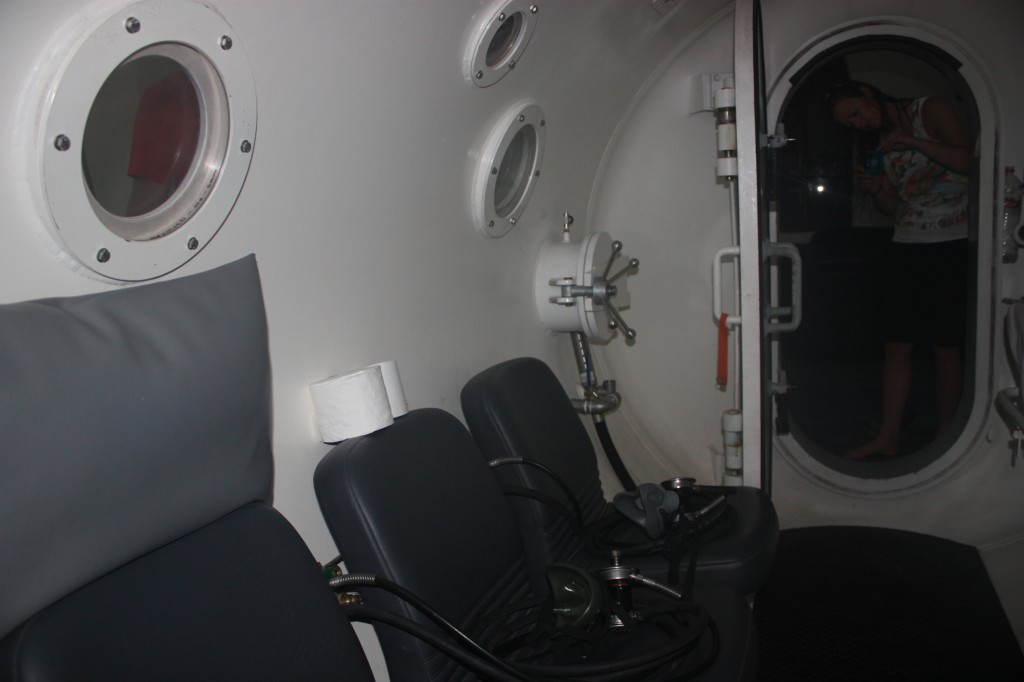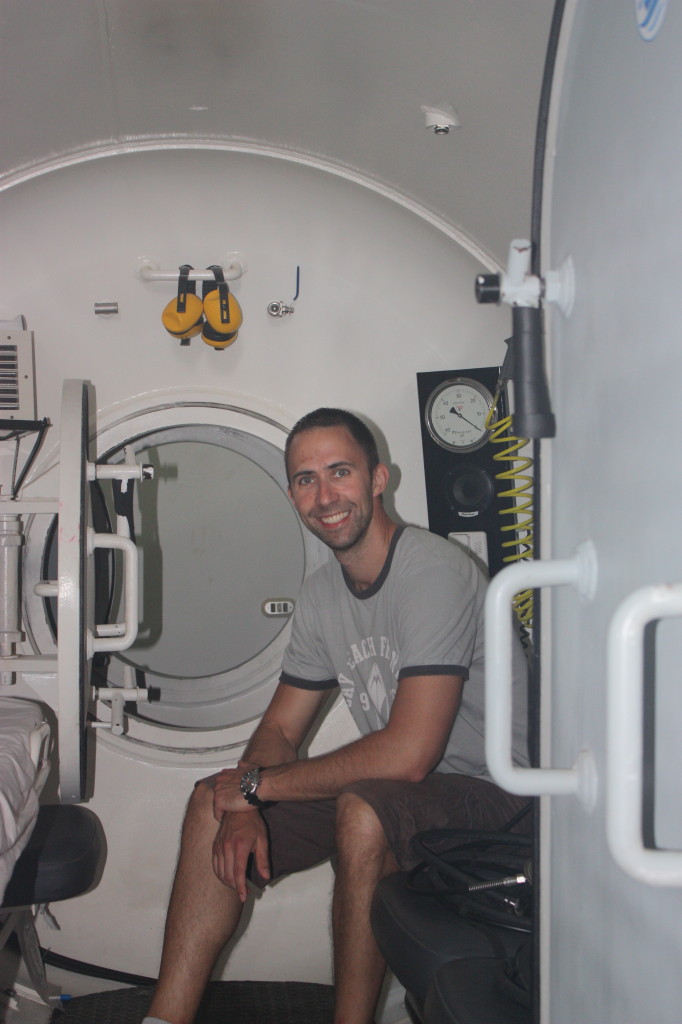During a trip to Egypt, I toured a hyperbaric clinic near Marsa Alam, a private clinic that treats both land-based and liveaboard divers for symptoms of decompression illness. It provided an interesting — and somewhat chilling — insight into what happens to divers who must receive treatment in a hyperbaric chamber.

The Last Resort
The center, called the Baromedical Diving Emergencies and Hyperbaric Clinic, is located between Marsa Alam International Airport and the city of Marsa Alam, right by one of the dive camps in the area, Marsa Shagra eco-diving village. It serves the dive camps, the resorts along the coast, and the liveaboard boats departing from both Hurghada and Port Ghalib. If a diver has suspected decompression illness, their dive operation transports them to the clinic. Here they undergo an initial treatment and subsequent evaluation. If they need more treatment, the diver can become an inpatient, staying at the clinic’s facilities.

How Does Hyperbaric Treatment Work?
When divers spend time underwater, the increased pressure causes their tissue to become saturated with nitrogen, an inert gas that makes up about 78 percent of surface air. The longer you’re down, and the deeper you go, the greater the pressure, and subsequently the more nitrogen you absorb. Decompression illness occurs when a diver ascends too quickly in relation to the amount of nitrogen he has absorbed.
But as long as you stay within the dive times outlined either on your dive tables or your computer and ascend slowly, observing any necessary decompression stops, your body will have time to off-gas excess nitrogen. Ascend too quickly, stay down too long, or go too deep, and your body might not be able to expel all the nitrogen that is released from your tissue as you ascend and nitrogen bubbles will form. These can occur in your joints, which causes stiffness and pain, and in veins, which causes blood clots, as well as many other places.
Hyperbaric treatment seeks to help a diver with decompression illness rid his body of the excess nitrogen by recompressing him, which is to say placing him under increased pressure again, and then reducing that pressure under controlled circumstances.
In a hyperbaric chamber, the diver is put under pressure in an oxygen-rich environment. The increased pressure helps reduce the size of any nitrogen bubbles that have formed in the patient’s tissue, and the increased levels of oxygen help the patient’s body disperse the nitrogen. As the diver is brought to surface pressure (decompressed), the nitrogen can escape through his respiratory system.
How long must you stay in the chamber?
Unlike popular perception, hyperbaric patients don’t usually spend days and days in the chamber. Rather, they are put under pressure for an initial treatment that can last quite a long time, often several hours. Afterward, doctors treat them with a series of sessions over several days. Patients are free to leave the chamber, and the facility, between sessions. Of course, they can’t neither fly nor dive as long as treatment is ongoing.

Inside the Chamber
The first thing that struck me was the chamber’s size. It’s small but not as cramped or claustrophobic as I’d expected. In my mind, I’d painted a picture of a tube just large enough to lie down or perhaps sit in. The room was large enough for a bed, a couple of chairs (you’re never alone in a hyperbaric chamber, a nurse or other trained staff member always accompanies you) and enough headroom to semi-stand up. Not a place I’d want to spend extended periods of time, but not as cramped as some hostel rooms I’ve stayed in.
“We try to make the stay as comfortable as possible,” explains Dr. Wael Nasef, who accompanied me on the tour. “We allow our patients to go and have dinner at nearby resorts, if their condition allows, and we generally try and take some of the scariness out of it.”
First, Be Safe
Dr. Nasef tells me of a case he is particularly proud of. A diver who was a professional basketball coach back home came in from a liveaboard. When he arrived at the clinic, he was hardly able to stand or even straighten his limbs, and he was in quite a lot of pain. After 10 days of several treatment a day, he was able to walk to the nearby dive camp and have dinner there. Following his return home and extended physical therapy, he returned to coaching basketball. A success story to be sure, but not one that should make divers take the risk of decompression illness any more lightly, if you ask Dr. Nasef.
“We can do a lot, but many divers, if they’re hit bad, will have to work hard to get back to their previous abilities,” he says. “First here in the hyperbaric chamber, then with retraining and possibly surgery.”
How many divers go in the hyperbaric chamber?
Unfortunately, the volume of divers coming into the chamber is on the rise. Dr. Nasef thinks the reasons are twofold. Diving is increasingly popular all over the world. Even with the dip in Egypt’s tourism after the Arab Spring, more divers still come every year. More divers, statistically, mean more accidents. Second, he says, some divers lack basic skills.
“They depend too much on their computers, and dive to the limits of what their computer says they can,” he says. “They’ve paid a lot of money to go diving and they to get as much out of it as they can. But each diver is different, and just because a computer tells you something is okay, doesn’t mean it is. Conservatism is your best friend. The best thing to do is to avoid ever having to come to a center like this.”
Treatments at the center, as with most hyperbaric chambers around the world, do come at a cost to the diver, up to tens of thousands of dollars for the most demanding and time consuming treatments. Always check that your travel or dive insurance covers hyperbaric treatment, but mostly, dive conservatively and safely and avoid the hyperbaric chamber entirely.


